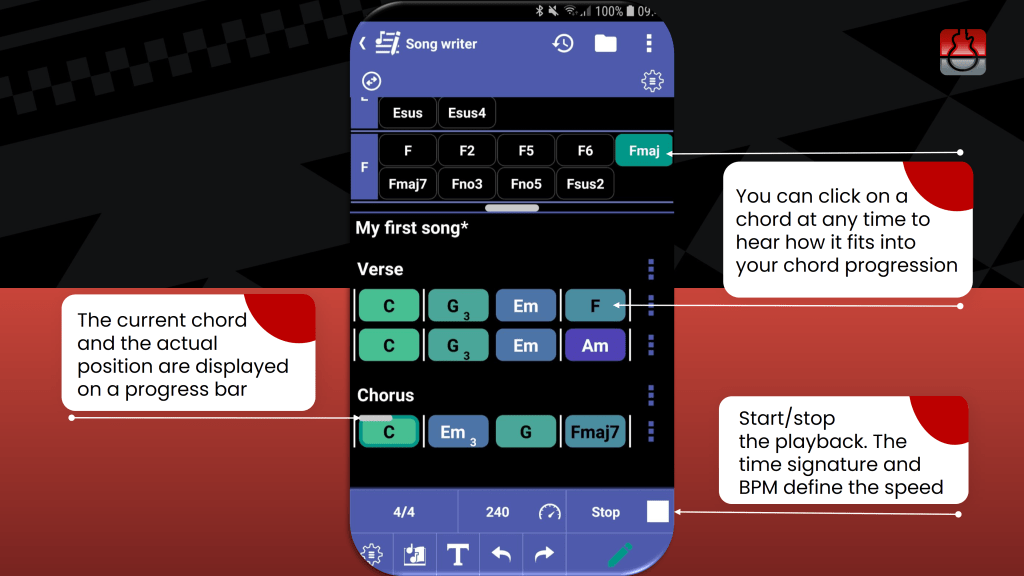Evaluate your chord progression

Evaluating your chord progression is an important step in the songwriting process to ensure that it sounds pleasing and achieves the desired musical effect.
Listen
Use the player to listen to your chord progressions critically. Start and stop the playback with the button in the toolbar. The playback starts with the selected chord. Pay attention to how it sounds as a whole and how each chord flows into the next. Trust your ear and intuition to gauge whether the progression has a pleasing and cohesive quality.
Examine the movement between chords in your progression. Consider the transitions and connections between chords. Assess if the movement feels smooth and natural or if it sounds abrupt or disjointed. Aim for a progression that has logical and satisfying chord transitions.
Explore variations of your chord progression. Make subtle changes to chord voicings, inversions, or substitutions to see if they enhance the overall sound. Don’t be afraid to try different chord options or reordering of chords to find the most effective and appealing arrangement. You can click on any chord at any time to hear how it fits into your chord progression. Use the different modes of the chord selection area to find the best-fitting chords.
Check tempo
Check the speed of your song. It is defined by the time signature and the beats per minute (BPM). The tempo can have a significant influence on how the chord progression is perceived and experienced by the listener. The tempo sets the pace and rhythm of the music, which can affect the overall energy, mood, and feel of the song. Faster tempos tend to create a sense of energy, excitement, and urgency. Slower tempos can evoke a sense of calmness, introspection, or melancholy, which can affect the emotional impact. They may provide a more relaxed or laid-back groove.

Rhythmic accompaniment
The Drum Machine is integrated for parallel playback to the player. The rhythmic accompaniment can play a crucial role in enhancing a musical composition in various ways. A well-crafted rhythmic accompaniment can establish a distinct groove and feel for the song, setting the overall mood and encouraging listeners to connect with the music on an emotional and physical level. The rhythmic accompaniment is a powerful tool that contributes significantly to the overall impact and success of a musical composition. It serves as the backbone of the song, driving its momentum and providing a framework for other musical elements to flourish.
Also the Metronome integrated for parallel playback to the player.
